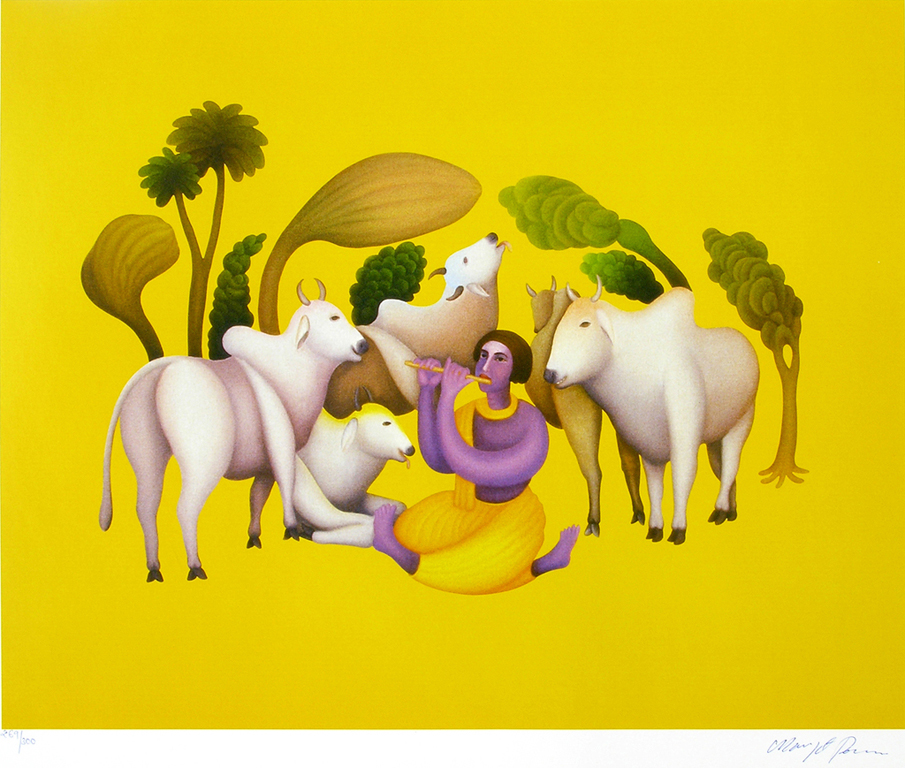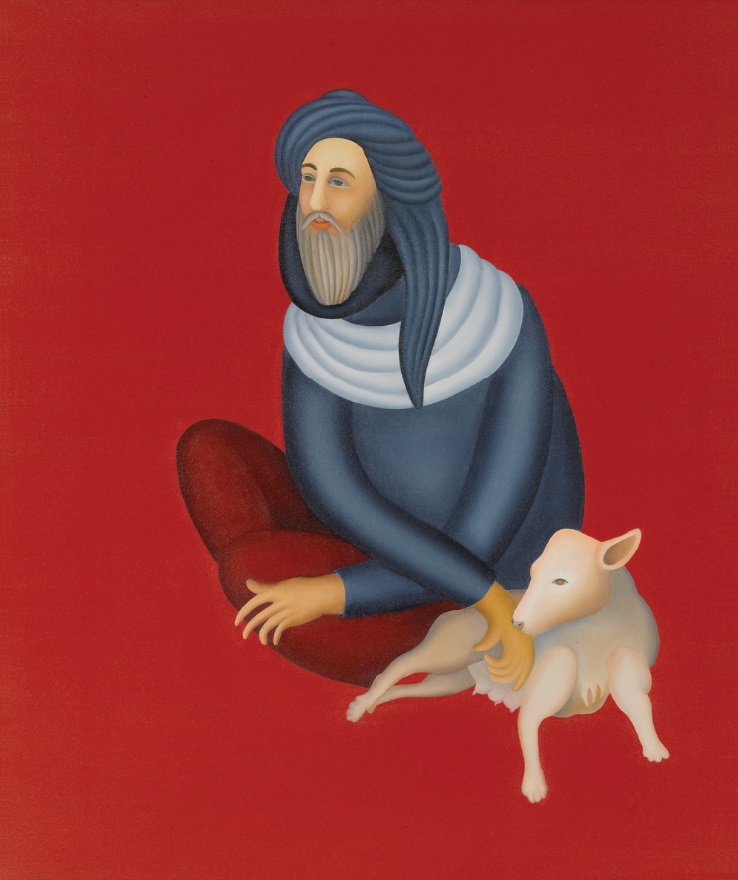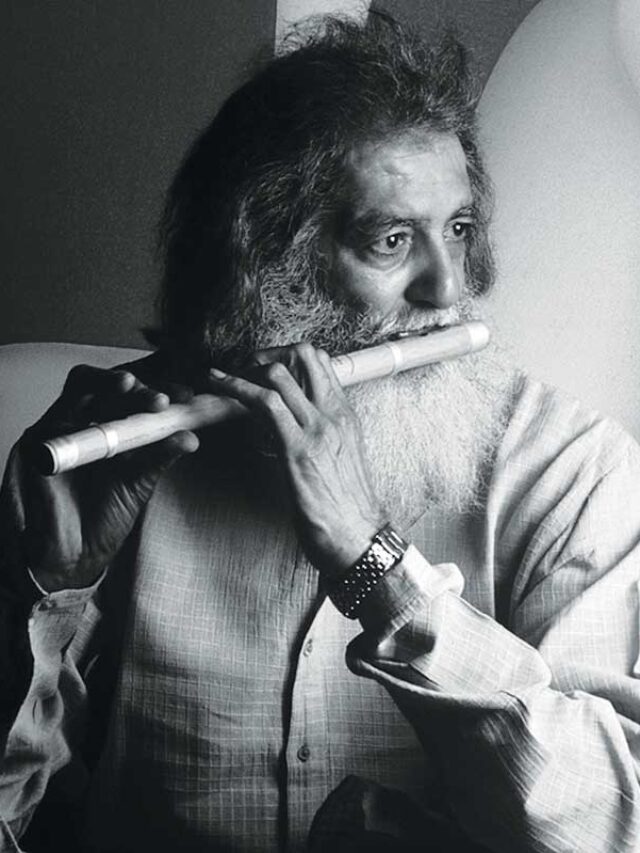30th July, On This Day
Manjit Bawa (1941–2008), a well-known Indian painter best recognized for his vivid and ethereal canvases, was a significant source of inspiration for Indian artists. Born on July 30, 1941 and raised in Dhuri, Punjab, attended the Delhi College of Art after first attending the School of Art in New Delhi. His paintings are frequently linked to the Indian narrative art tradition, enriched with a unique fusion of classical and folk elements.

Bright colours, straightforward forms, and symbolism derived from Indian mythology and spiritual traditions are characteristics of Bawa’s works. He frequently paints animals, birds, and strange or dreamlike people. He received praise for his portrayals of animals, giving him a feeling of honour and spirituality. Bawa distinguished himself from his peers by sticking to his unique style throughout his career. Exhibitions of his work were held in many major cities worldwide as it acquired a reputation both in India and abroad. Bawa is regarded as one of the most important painters of his generation because of the long-lasting legacy his contributions to Indian art have left.

He frequently portrayed Hindu mythological animals, gods, goddesses, and other characters, giving them his interpretation and meaning. The use of vivid colours by Bawa to generate feelings of harmony, joy, and spirituality is one of his work’s most defining characteristics. Bold colours like red, blue, yellow, and green were frequently used in his palette, applied in flat, even tones, highlighting the shapes’ simplicity and purity. Bawa’s paintings have purity and naivety, even if they incorporate folk art themes. His stylized, often overdone features and exaggerated dimensions give his figures a timeless air. In addition, Bawa’s devotion to composition, symbolism, and narrative structure are all hallmarks of his paintings’ classical Indian art traditions. He invites people to ponder the deeper meaning of his picture by deftly combining several levels of meaning.
”Going back to my earliest memories – I recollect listening to stories of Mahabharata, Ramayan, and Purana from as far back as I can remember. Religious scriptures, such as the Holy Granth, were a part of my formative years”- Manjit Bawa
Manjit used to write, sketch, and draw without any technique as a teenager. “At that time, my driving need was to bring out all those ideas I had within me, anyhow,” Manjit relates. His brother introduced him to Abani Sen, who is considered one of the great masters of modern Indian painting, after noticing his infatuation with art. When abstraction was dominant in India, Bawa was encouraged to embrace figurative art by Manjit, who affectionately referred to him as “Master Babu.” In one of his interviews, Bawa remembers Sen always stressing how important space is. “His strident query still rings in my ears: why can’t I see the space behind the model?”

In 1964, Bawa relocated to England, where he attended the London School of Painting and worked as a silkscreen printer. The aspiring artist lived in England for eight years before returning to India in 1972. Here, he continued examining the topics of Indian mythology, folktales, and love stories that fascinated him. He turned his back on European art conventions and immersed himself in Sufi philosophy, music, spirituality, and poetry. Indian sensitivities and culture are deeply embedded in his artistic inspiration. His colourful, free-flowing poetry sets the scene for his subjects to launch into a performance suddenly. These themes, which have Puranic and Hindu mythological roots, gave Bawa’s work its spiritual essence.
”My day-to-day life revolves around these allusions. To label is to limit. They remain, to me, basically mythical icons, such as Durga, Kali, Shiva, Krishna, or even Heer–Ranjha, Mirza–Sahiba, or Sohni–Mahiwal. In my world of imagination, they are genuine. I have known them from childhood tales and fables narrated to me by my father. Growing up, I met them again in literature, music, poetry, and art. What else can I draw?” – Manjit Bawa

‘I am very much a Sikh. Not a militant Sikh but a believer in the Sufi-Bhakti cult of Sikhism. I read Guru Granth Sahib, but I am not a practising Sikh. I have read great works from other religions like the Bhagavadagita, Shiv Purana, Ramayana, etc. I hated Manu Smriti. I love Punjab. I feel an oneness with its soil. My language is Punjabi. The remark made to me in childhood stays in memory, “What can a Sardar paint”, Manjit Bawa replied to an interview question with Belu Maheshwari.
Once, Bawa talked about his striking memory of Partition, collecting food for refugees, and seeing multimillionaires reduced to selling fruits. Many incidents affected and moulded Bawa as an artist, and he stated that ‘I was the first to use colours like violet, shocking pink, bright yellow and green in large spaces. I used flat colours. The only other artist using it was J. Swaminathan. On the canvas, I put emblematic images. I was criticised but stuck to my intuitive and innate sense of form.






